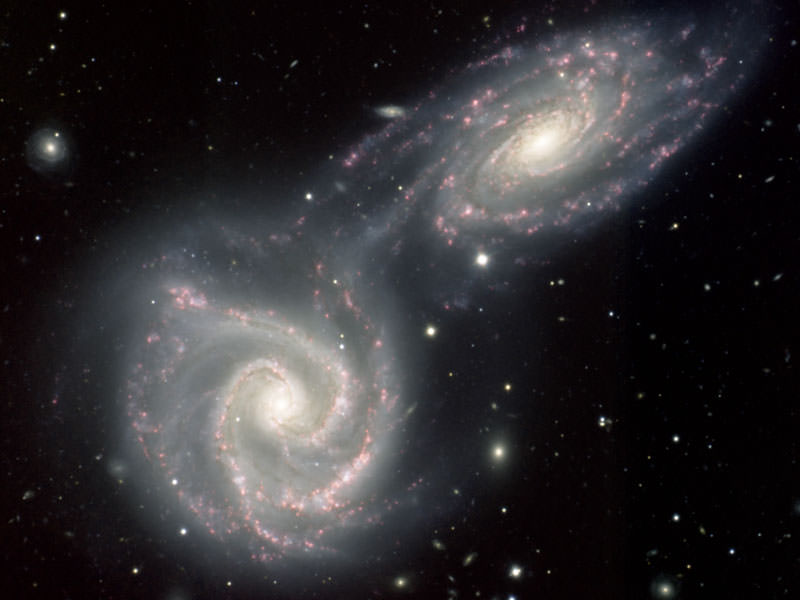[/caption]
It all started so full of promise. All at once, our universe burst upon the scene, but much of that initial burst quickly dissipated into background neutrinos and photons – and ever since, pretty much everything our universe has ever done has just dissipated more energy. So, despite the occasional enthusiastic outburst of supernovae and other celestial extravagances, it’s becoming increasingly apparent that our universe is getting on a bit.
The second law of thermodynamics (the one about entropy) demands that everything goes to pot over time – since anything that happens is an opportunity for energy to be dissipated.
The universe is full of energy and should always remain so, but that energy can only make something interesting happen if there is a degree of thermal disequilibrium. For example, if you take an egg out of the refrigerator and drop it in boiling water, it cooks. A useful and worthwhile activity, even if not a very efficient one – since lots of heat from the stove just dissipates into the kitchen, rather than being retained for the cooking of more eggs.
But, on the other hand, if you drop an already cooked, already heated egg into the same boiling water… well, what’s the point? No useful work is done, nothing of note really happens.
This is roughly the idea behind increasing entropy. Everything of note that happens in the universe involves a transfer of energy and at each such transfer some energy is lost from that system. So, following the second law to its logical conclusion, you eventually end up with a universe in thermal equilibrium with itself. At that point, there are no disequilibrium gradients left to drive energy transfer – or to cook eggs. Essentially, nothing else of note will ever happen again – a state known as heat death.
It’s true that the early universe was initially in thermal equilibrium, but there was also lots of gravitational potential energy. So, matter (both light and dark) ‘clumped’ – creating lots of thermal disequilibrium – and from there all sorts of interesting things were able to happen. But gravity’s ability to contribute useful work to the universe also has its limits.
In a static universe the end point of all this clumping is a collection of black holes – considered to be objects in a state of high entropy, since whatever they contain no longer engages in energy transfer. It just sits there – and, apart from some whispers of Hawking radiation, will just keep sitting there until eventually (in a googol or so years) the black holes evaporate.
The contents of an expanding universe may never achieve a state of maximum entropy since the expansion itself increases the value of maximum entropy for that universe – but you still end up with not much more than a collection of isolated and ageing white dwarfs – which eventually fizzle out and evaporate themselves.

It’s possible to estimate the current entropy of our universe by tallying up its various components – which have varying levels of entropy density. At the top of the scale are black holes – and at the bottom are luminous stars. These stars appear to be locally enthalpic – where for example, the Sun heats the Earth enabling all sorts of interesting things to happen here. But it’s a time-limited process and what the Sun mostly does is to radiate energy away into empty space.
Egan and Lineweaver have recently re-calculated the current entropy of the observable universe – and gained a value that is an order of magnitude higher than previous estimates (albeit we are talking 1×10104 – instead of 1×10103). This is largely the result of incorporating the entropy contributed by recently recognized supermassive black holes – where the entropy of a black hole is proportional to its size.
So this suggests our universe is a bit further down the track towards heat death than we had previously thought. Enjoy it while you can.
Further reading: Egan, C.A. and Lineweaver, C.H. (2010) A Larger Estimate of the Entropy of the Universe http://arxiv.org/abs/0909.3983

